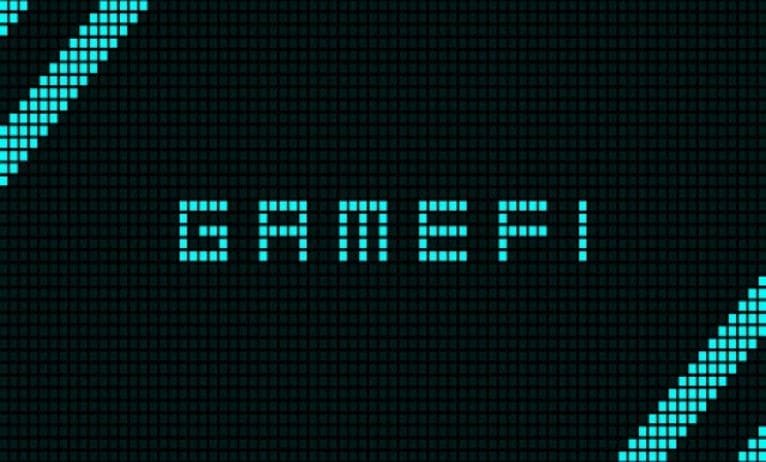Which Is the Best Blockchain for GameFi Developers?

The transformational potential of blockchain has already impacted multiple industries, ranging from finance to insurance and healthcare to supply chain logistics. But few industries have seen a bigger impact over the last year than gaming, where an entirely new generation of “play-to-earn” games has arisen.
So-called P2E games, often known as “GameFi”, use blockchain and related technologies like NFTs and cryptocurrencies to give players a way to earn genuine rewards that can be sold for real-life cash. In other words, the long-held gamer’s dream of being able to make money from playing computer games is now a reality.
With P2E games, players compete for rewards which can be both cryptocurrency or NFTs that represent in-game items such as weapons or player “skins”. These rewards can be traded on third-party marketplaces for Bitcoin or Ethereum and other tokens, giving players a way to cash out and pay the bills through their gaming efforts.
Key Considerations For GameFi
While P2E games can be built on multiple blockchain platforms, developers should understand that not every blockchain can support gaming. For instance, the most famous blockchain of all – Bitcoin – serves as a database of financial transactions, but it isn’t possible to build other applications on top of it.
One of the key requirements for P2E games developers is that their blockchain of choice supports smart contracts, programmable contracts that eliminate the need for an intermediary. Smart contracts are only executed once certain conditions have been met. In the context of P2E games, a smart contract might be programmed to automatically send an NFT to a wallet address once that user reaches a certain level within the game. Smart contracts play a key role in enabling transactions in P2E games.
A second key requirement for games developers is NFT compatibility. NFTs are a key element in the crypto gaming economy, representing everything from game characters to trading cards, weapons, cars, ships, or any other gaming component that players can own. By encoding game characters and items as NFTs, it becomes possible for these things to be transferred between players, and as a result, they can have value.
One last capability for blockchain games is interoperability, which means that an NFT created in one game can interact with other P2E games and cryptocurrency exchanges and marketplaces.
Interoperability is necessary to facilitate trade and give players a way to cash out their earnings, but its potential is still being explored and will likely go way beyond that. For instance, game developers are already looking at transferable NFTs that might represent a car in one game, a skin in another, or a weapon in a third game. Interoperability will lead to some exciting possibilities for developers to market their P2E games.
For instance, a player who has already amassed tokens in Game A (which is already popular) could be offered bonus items if they start playing Game B (which has just been released). In this way, blockchain interoperability gives developers limitless opportunities to grow their game’s ecosystems.
The Best Blockchain For Games Devs?
Most crypto games have been built on the Ethereum blockchain due to its first-mover advantage. Being the first-ever blockchain with smart contract capabilities has allowed Ethereum to amass thousands of decentralized applications and a strong community of developers and users.
For GameFi developers, the draw of Ethereum is strong as it means they can easily tap into that existing user base. Nonetheless, Ethereum isn’t without its problems. Its most infamous drawbacks include its high gas fees (the tax users pay on each transaction) and its congested network, which means transactions can sometimes take several hours to process.
Although most games are still built on Ethereum, many developers are shifting to build on alternative chains such as Cronos.
Cronos has several key advantages over Ethereum, making it a strong bet for P2E game developers. It is smart contract and NFT-compatible, but it’s also incredibly scalable to process thousands of transactions per second, far above Ethereum’s 30 TPS.
Cronos is an EVM-compatible chain too, which means it’s interoperable with Ethereum. So any application or game built on Ethereum can be easily ported to Cronos. The same goes for NFTs and tokens. Further, Cronos supports the Inter Blockchain Communications protocol that bridges the Cosmos ecosystem, further extending its interoperability.
Perhaps the best reason to build games on Cronos is its focus on gaming. Cronos recently announced Cronos Play, a suite of developer tools and services that make it easier to create games on the Cronos chain. Crucially, Cronos Play supports the ChainSafe Gaming SDK, an open-source software developer kit for games built in Unity. This popular gaming engine was used to build Pokemon Go and Call of Duty: Mobile, among other titles.
With ChainSafe’s Gaming SDK, Unity developers can easily build P2E capabilities into their games. It provides an easy way to access on-chain data, fetches wallet addresses, queries crypto and NFT balances, transfers NFTs, etc. The SDK is also compatible with other top blockchains, including Ethereum, Binance Chain, and Avalanche.
With its built-in advantages around transaction speed and interoperability and the availability of Cronos Play, it’s hard to find a better blockchain for games developers to build on. Not only will Cronos games support high-quality games built using Unity with fast, low-cost transactions, but they’ll enjoy a higher degree of interoperability too. With all of those ingredients in place, developers finally have the freedom to focus on creating more compelling gameplay needed to bring a new generation of players into the world of blockchain-based games.



